Book Review: Essential posthumous monograph “Daniel Weissbach aka COST aka DTagno”
Four years after the end of his life, a bilingual monograph about the Berlin artist Daniel Weissbach (* 1976, DE, † 2020, DE) has now been published. His longstanding gallery Ruttkowski;68 published this comprehensive 528-page retrospective with texts in German and English in January 2024. After two years of intensive collaboration of a group of people who were connected to the artist in different ways and who organized and analyzed the artistic estate, this comprehensive book was created with wonderful illustrations and texts by Jöran A. Belling-Lindberg, Vincent Grunwald, Iris Hempelmann, Olga Hohmann, Gregor Jansen, Robert Kaltenhäuser, Thomas Max Waldmann, as well as text excerpts/quotes from the artist.
The book covers the creative phases of Daniel Weissbach / DTagno / COST from 2005 onwards, as the Berlin artist used several pseudonyms for his works in the graffiti and writing context in outdoor spaces from 1988 onwards, and his name for his studio works in the exhibition context. In the 1990s, he developed an individual and recognizable personal style as a graffiti writer under the name TEKNO/TAGNO, which was completed in the next decade with the renaming of his writer name to COST.
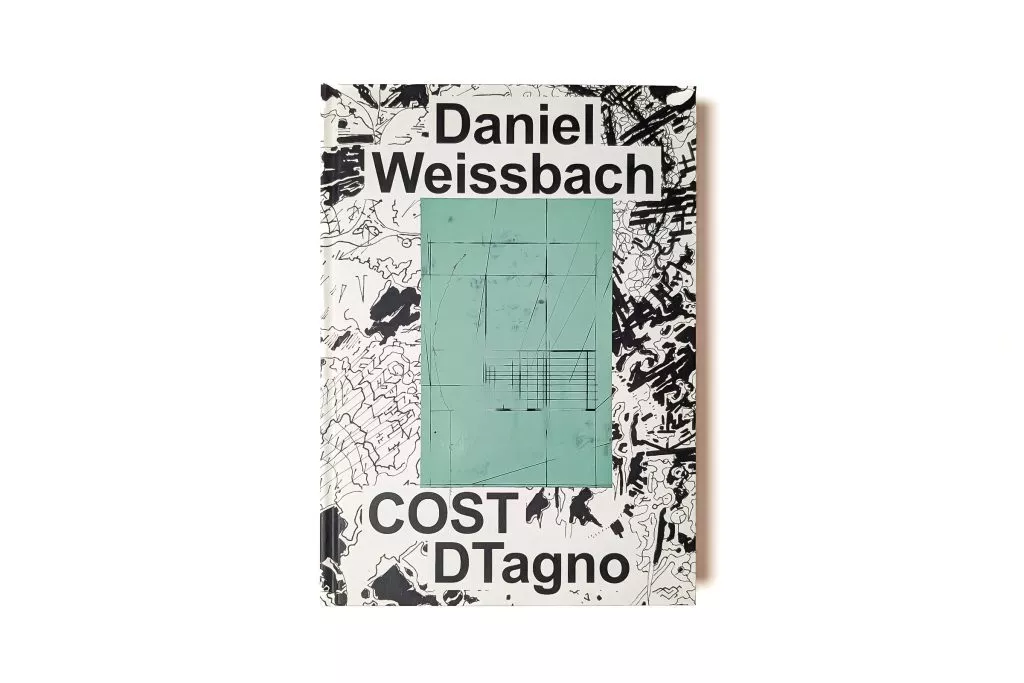
The monograph “Daniel Weissbach aka COST aka DTagno” begins here, after 2005, and shows the complexity and uniqueness of his work in 5 different phases of 2 to 3 years each, structured chronologically backwards (2020-2005). Among them are full-page illustrations of his canvases, his numbered series, called Stelle#Nr, which invite us to take a longer look. And again and again we encounter Daniel’s handwriting. On the very first page, we are greeted by a touching message from his hand: ” 26.6.20 – I love you all more than anything & I’m doing fine (smiley heart)”. On the second page with the title of the publication, his marker-drawn tags COST and DTagno and his signature have been added. The reader is thus immediately confronted with Daniel’s personal handwriting, with the line and script that are fundamental to his work.
The blurb text leads the reader into the thoughts conveyed by his art: “Emergence and decay, construction and destruction, constant change and the immanent notions of infinity fill Daniel Weissbach’s works with the energy of time as the basic condition of human existence. Through materialized movements, manifested gestures and frozen moments, he has created a language that is capable of naming the unnamed, to track down the interstices and turn them into protagonists, bringing the past into the present. As if one life, one person, were not enough to sufficiently question the possibilities and limitations of the worldly order, Daniel catalysed the ambiguity of existence into multiple identities. This book is an attempt to depict his entire oeuvre in order to preserve the value of his artistic work over time.”
The introductory text by Vincent Grunwald, who explains the book project, ends with: “This publication is a mosaic of all of us who were involved and a testimony to the irrepressible desire to experiment”.
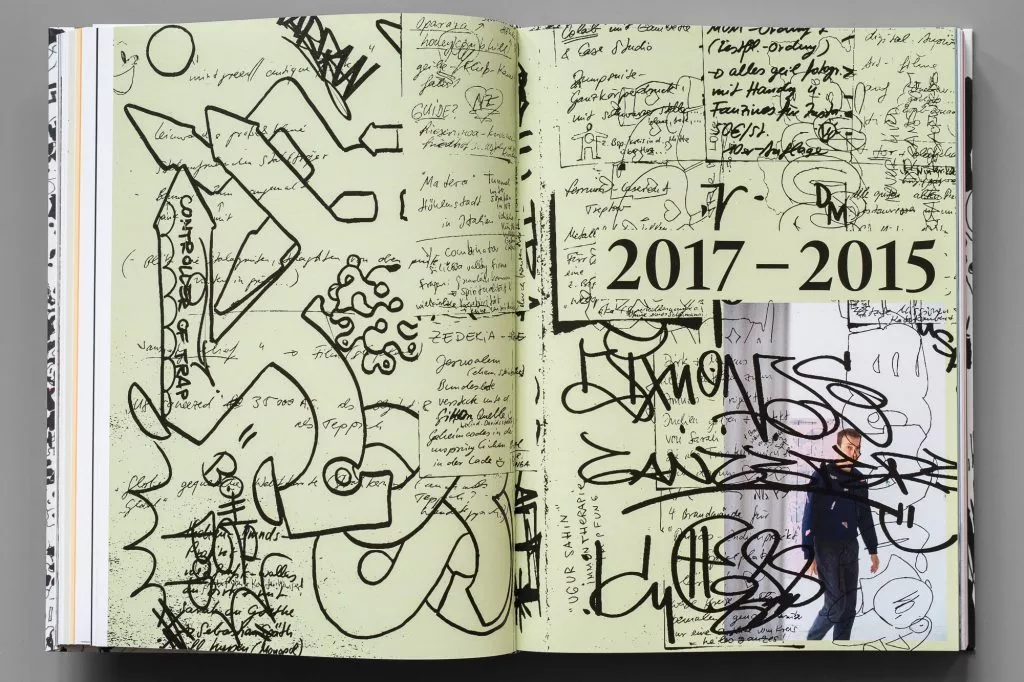
This mosaic is definitely a success and has been realized with original ideas for the structure and graphic design. The various texts provide us with interesting perspectives on his art and the man himself. With art-historical references to his work, thoughts on series of works, on his oeuvre as a whole, on writing. Historical narratives such as a project trip to India by Robert Kaltenhäuser and his analysis of DTagno’s work is the longest contribution. There are also descriptions of works (such as performances with Markus Butkereit), as well as concepts and thoughts from the artist himself.
Some text passages are particularly revealing, such as Daniel Weissbach’s own statement on graffiti writing (from 2007), with parallels to the art world, to film, and its further development: “Writing is structured similarly to the established art world, functioning according to the same mechanisms. In spite of its origin as street culture, it remains elitist, as do other conceptual approaches. Prerequisites for writing include the detailed study of its background and history in order to be able to recognize and decipher its symbols and codes at all. In the urban context, writing has created new levels to be read or cause, which confuse anyone who cannot read it. Just as film has its own idiom, which a director must employ to be understood by the viewer, writing has also developed its own idiom. Writers as well as filmmakers always keep the surface level of their idioms in flux and seek opportunities to refine them or break them open in order to allow something new to develop. This idiom is therefore subject to changes over time, as it every other idiom, which makes it more difficult for outsiders to comprehend.“ (p. 483 ; excerpt from a contribution to the book “Writing the Memory of the City”, Dokument Press, 2007).
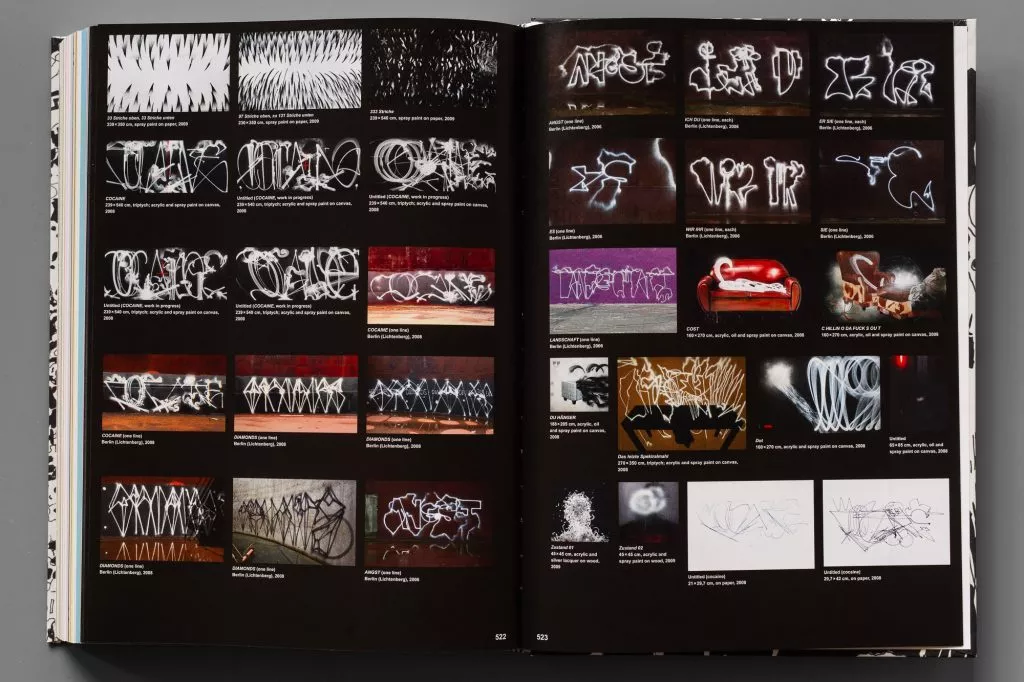
In graffiti writing, COST/DTagno developed innovative approaches and concepts for typefaces, worked intensively with one-liner drawings, the pure line, the painterly abstraction of letters and styles, built innovative tools for spraying (such as The Gadget), which were used in performances and captured on film as video works. His conceptual, avant-garde ideas on writing inspired other graffiti writers worldwide in the 2000s and continue to leave their mark today. Through his groundbreaking ideas, mastery of his self-developed tools and perfectionist execution, he became a king and an icon for many people in the graffiti world. With the DIAMONDS collective, he created abstract, large-scale collective paintings on walls and trains, which also provided new inspiration for writing coming from Berlin and are featured in the book. In 2008, DTagno described his practice at the time for his website as follows: “I write figures and paint writing. I occupy myself with the boundaries between text and imagery. I transform scripts into a genre, such as portraits, landscapes, or figure studies are painted. The boundaries between symbol, image, and text are fluid, always moving“ (p. 450).
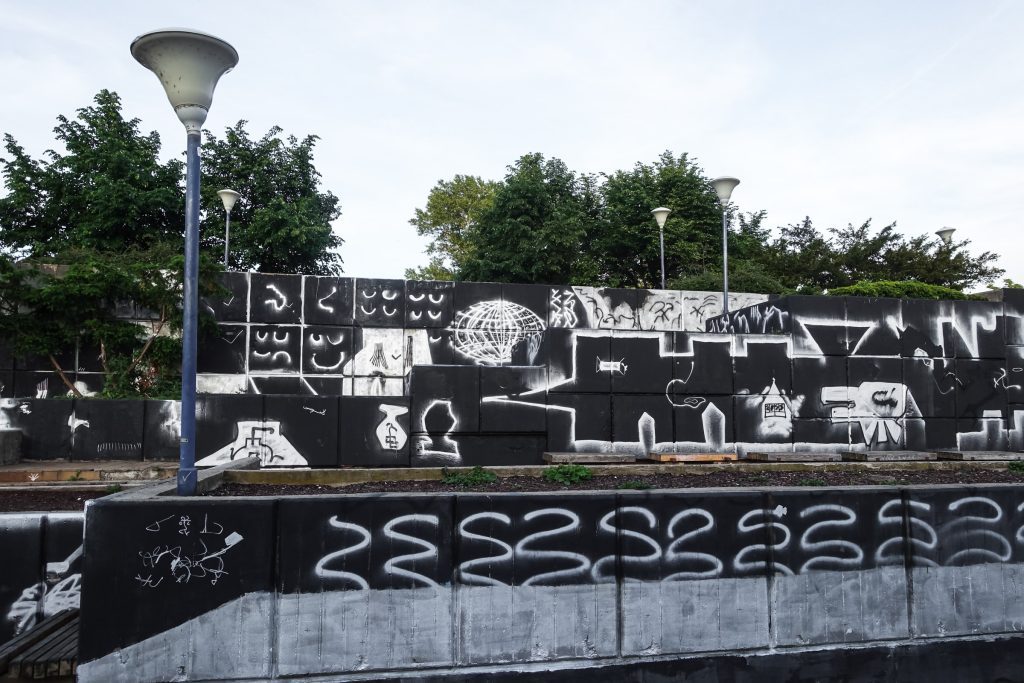
Daniel Weissbach’s studio works, which he created between 2006 and 2020 – the practice in the interior space – were just as important to him as his work in the outdoor space and were closely linked. Very productive in the studio from 2010 onwards, his canvas series also take centre stage visually in this monograph. He describes a connection between his works outdoor and his studio works here: “In my works, I often deal with the transition of urban phenomena into artistic forms of expression, into the interior space of art (…)” (S. 347).
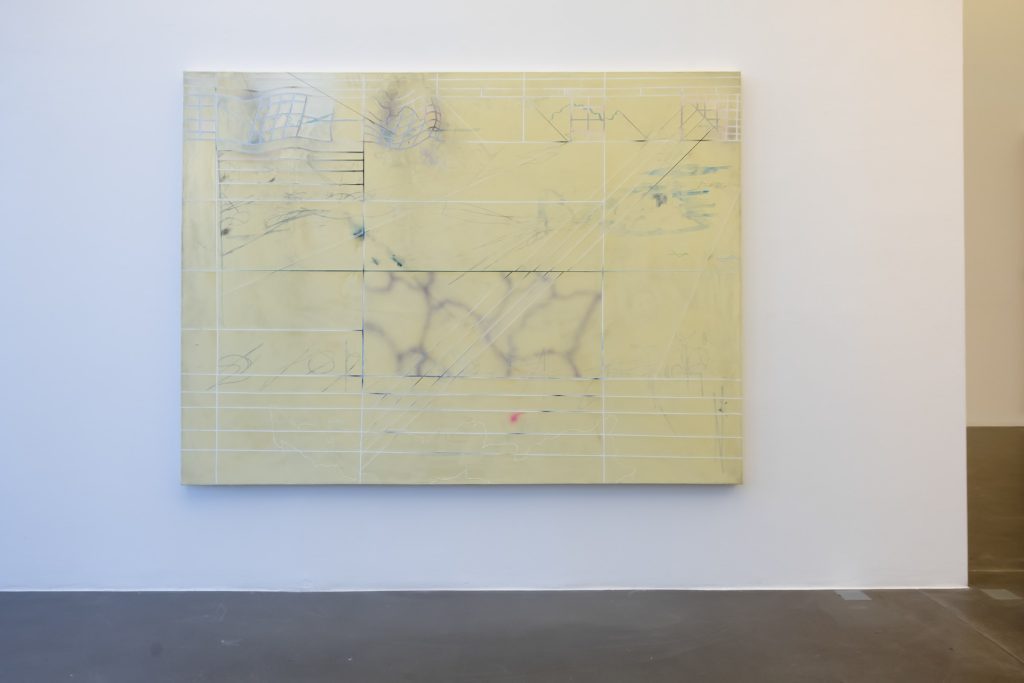
Urban phenomena such as on walls, in Berlin’s underground stations, on its various tiles and joints, where Weissbach hunted down traces of time, photographed details, measured spaces like an archaeologist. With a trained eye for urban writing, the “scanning” of surfaces, he found special places that inspired him aesthetically and intellectually. In his canvases, these countless spots from the exterior space were incorporated into the canvas surface layer by layer with painterly means, temporarily captured impressions of time, textures, traces of people, remnants, material changes through decay. Daniel Weissbach also repeatedly took up the motif of the tile, the grid/grid of joints, the “BVG tile pattern” in a playfully way, changing and transposing it in his canvases with layers of acrylic and lacquer paint. Capturing these areas on the walls of the city, depicting them as motifs in a new materiality and a different dimension, and thus making them visible, is at the same time an attempt to immortalize them as a work of art, as a “snapshot of a living surface”.
“I use the human-made surfaces to provide them with information. This can be the psychogram, but also the frozen moment, which plays a very important role in my works. The works always show just a moment of decay. In reality, the surface, this skin out there, continues to work,“ Weissbach said in 2014 in a video for the exhibition Stellen/Places at Ruttkowski;68 in Cologne.
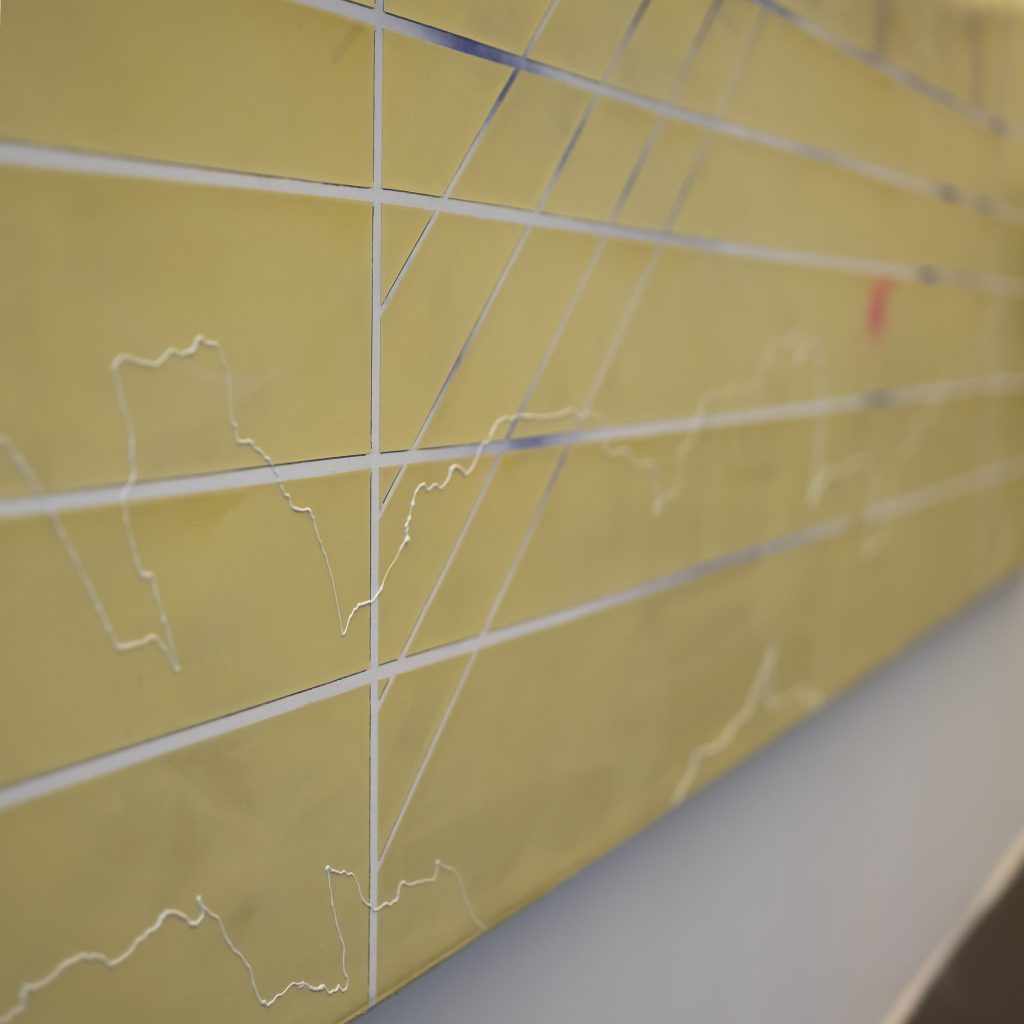
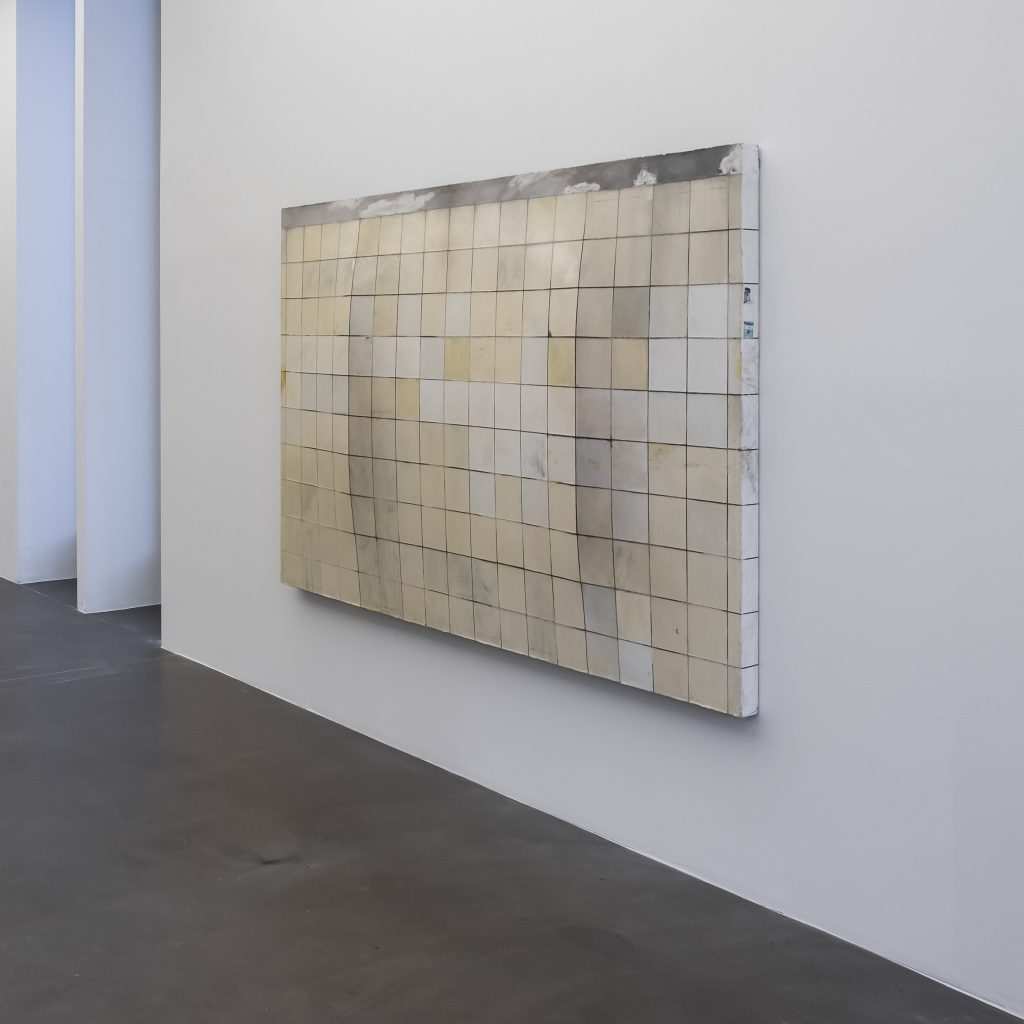
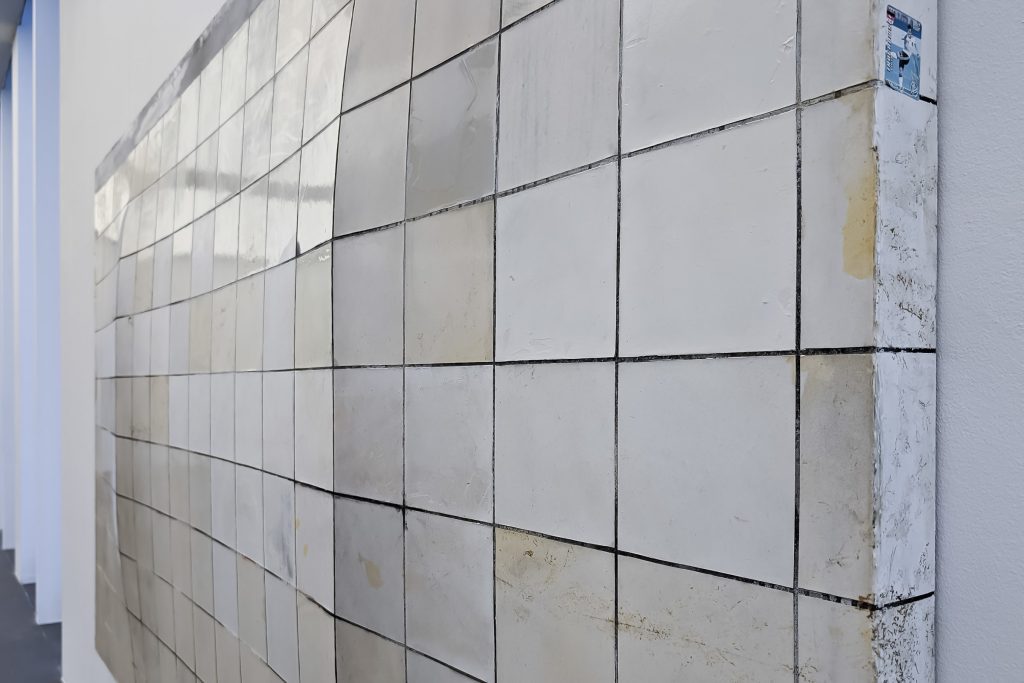
That is very true, the surface, the skin of his city Berlin does indeed continue to change and be worked on out there, and some places/spots certainly still contain the traces of COST88/KOST/TEKNO/TAGNO and DTagno in their deeper surface.
The book ends with the index, the compilation of all his works in series, from 2020 to 2006, listed chronologically backwards, with small illustrations. It forms a great overview of his diverse artistic work in various media. The index can be seen as a kind of catalogue raisonné. This publication with many illustrations, such as of his writing practice like of sketches, drawings, graffiti pieces on walls and trains, his murals, installations, video works, of his self-made devices, as well as of numerous studio works on canvas, paper, wood or glass, shows us Daniel’s artistic talent full of experimentation and originality.
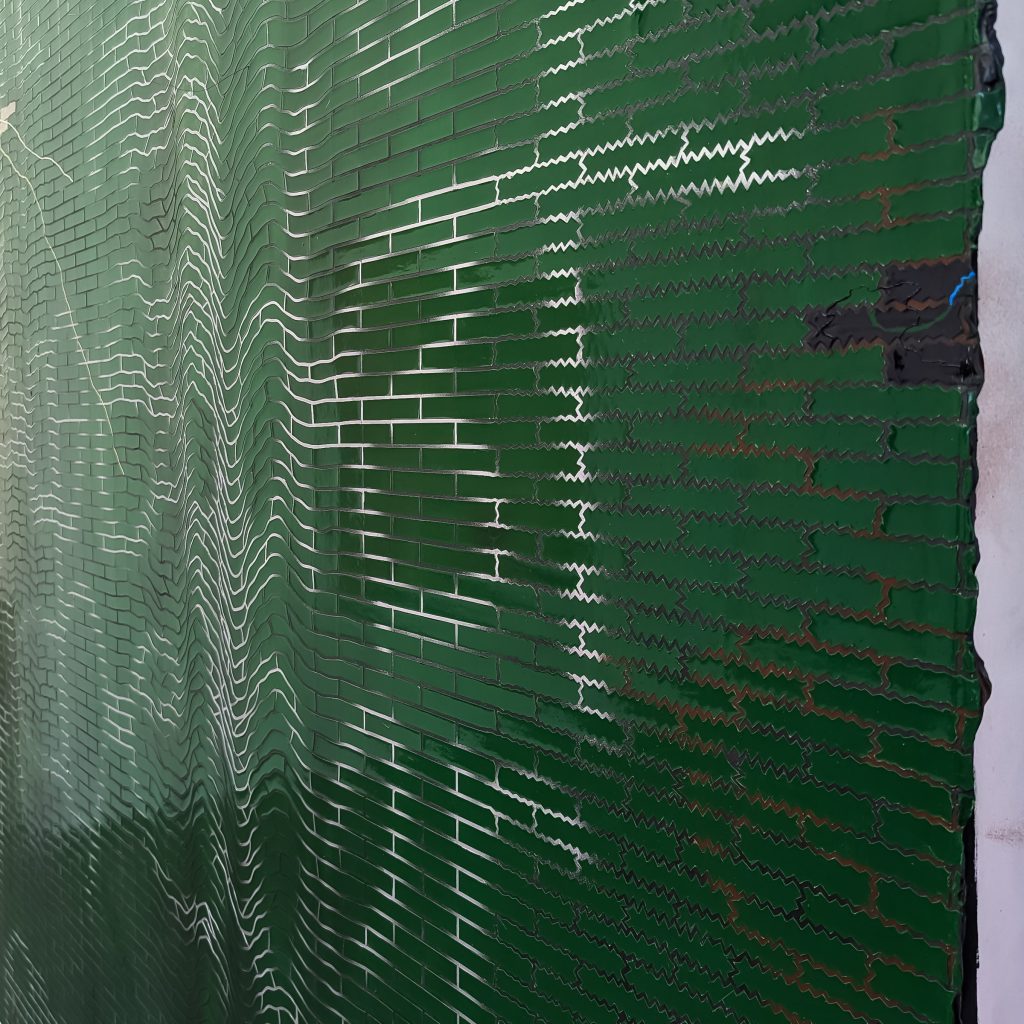
“Daniel Weissbach aka COST aka DTagno” has become a high-quality art book, a precious document about the work of a unique artist, which one leafs through carefully with curiosity and pleasure, with visual and written surprises, conveyed by people close to the artist, which ultimately makes it impossible not to be touched by Daniel Weissbach. A must-have for graffiti writers who are not only interested in classic style writing, an enrichment for contemporary art lovers and also for every art library.
At the same time, a solo exhibition by Daniel Weissbach, his fourth – and first posthumous – solo exhibition, Stellen, is taking place at the Ruttkowski;68 Gallery in Düsseldorf from 20 January to 24 February 2024.
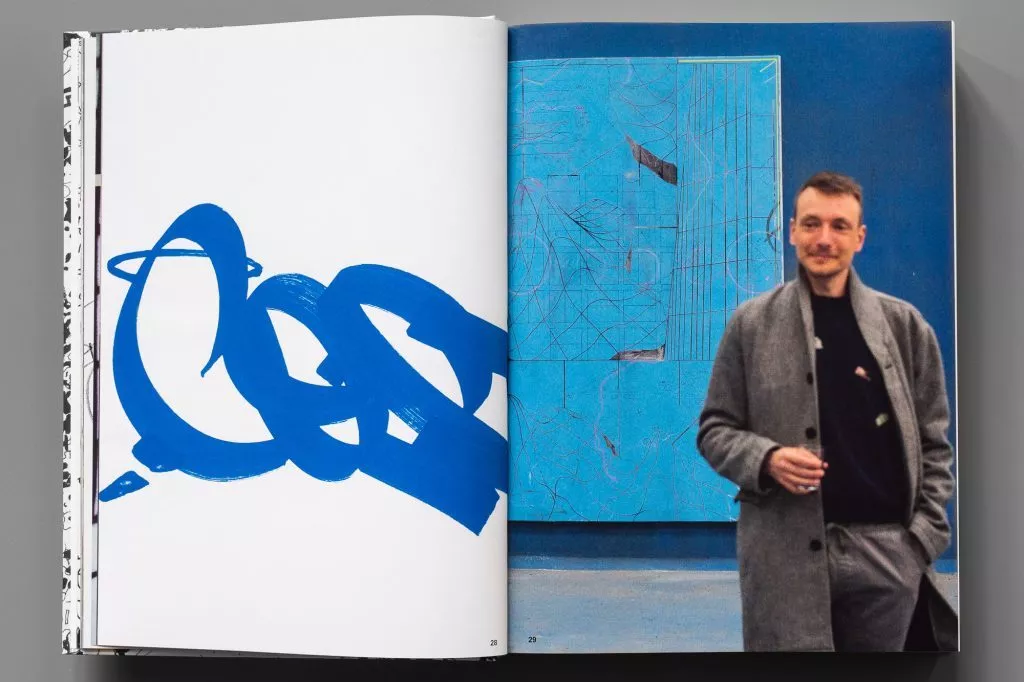
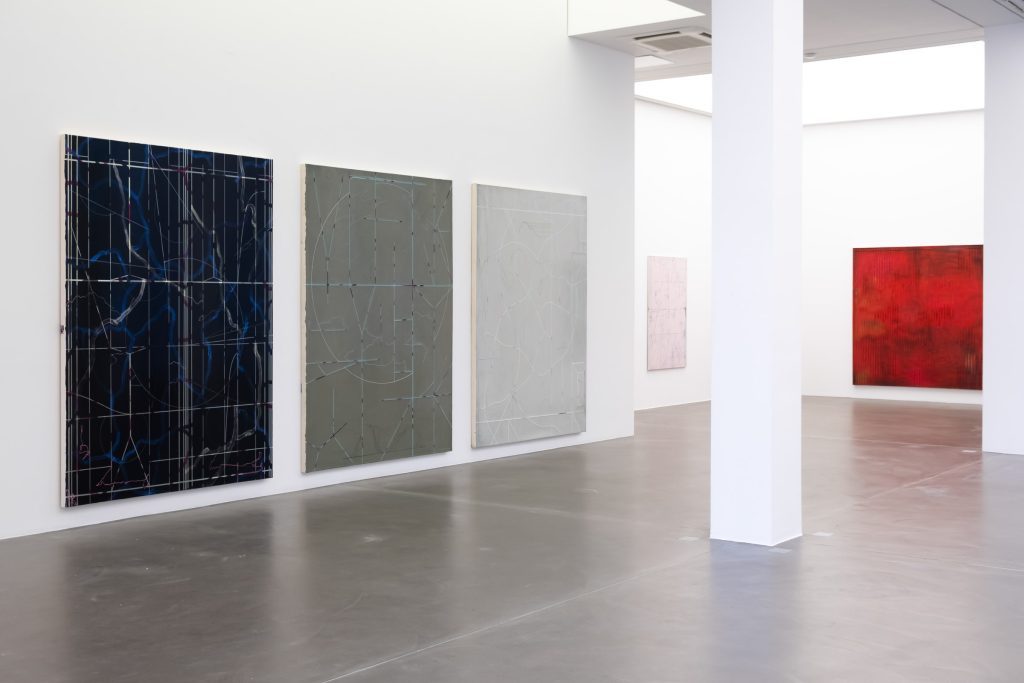
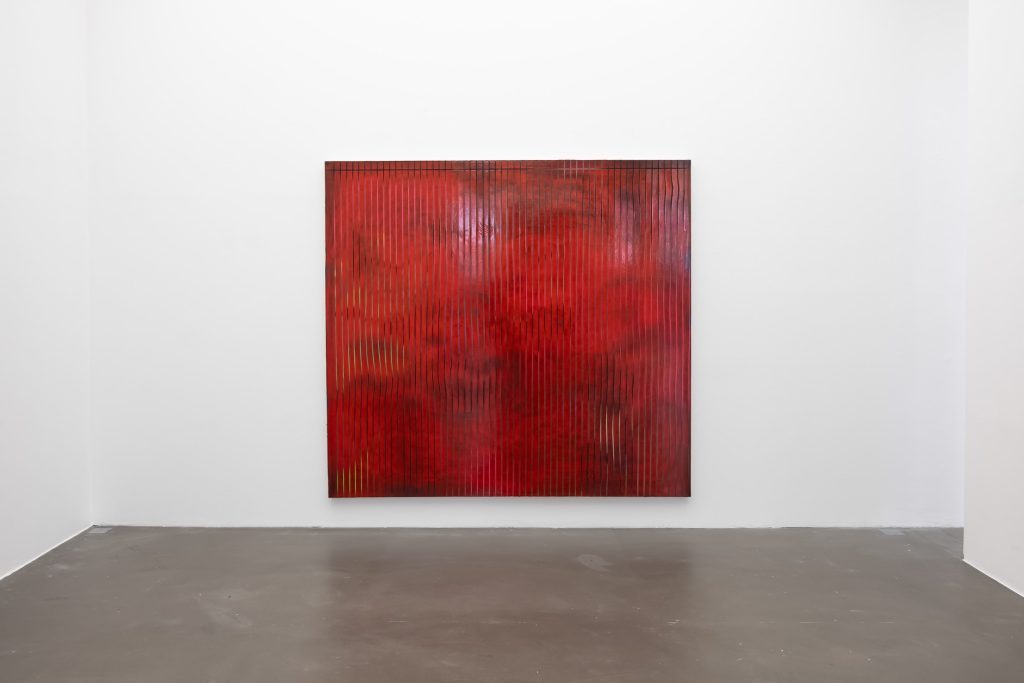
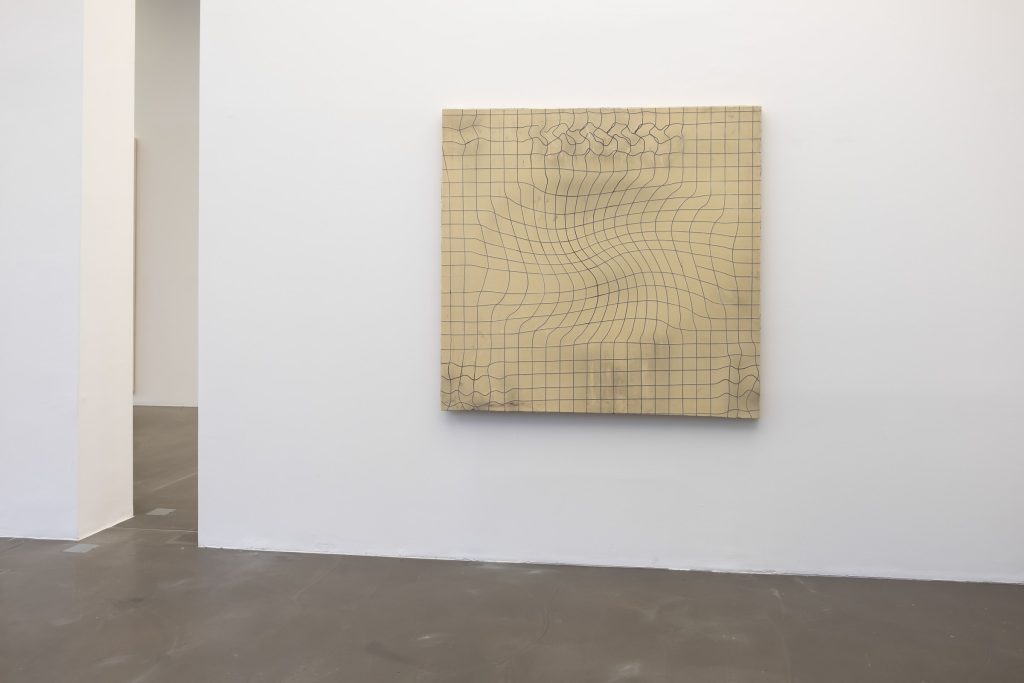
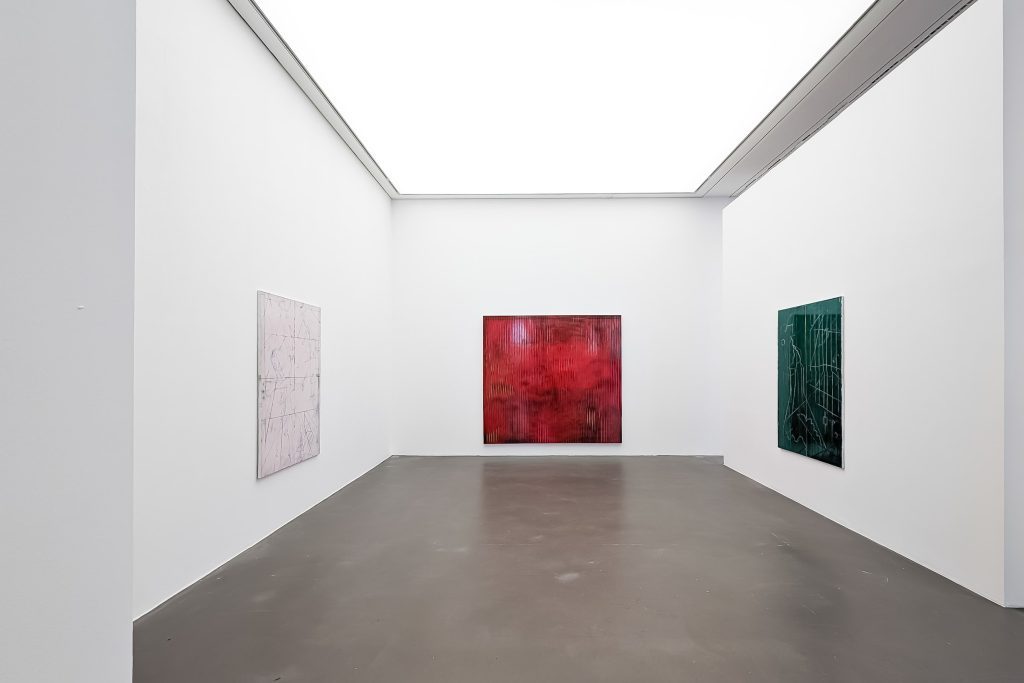
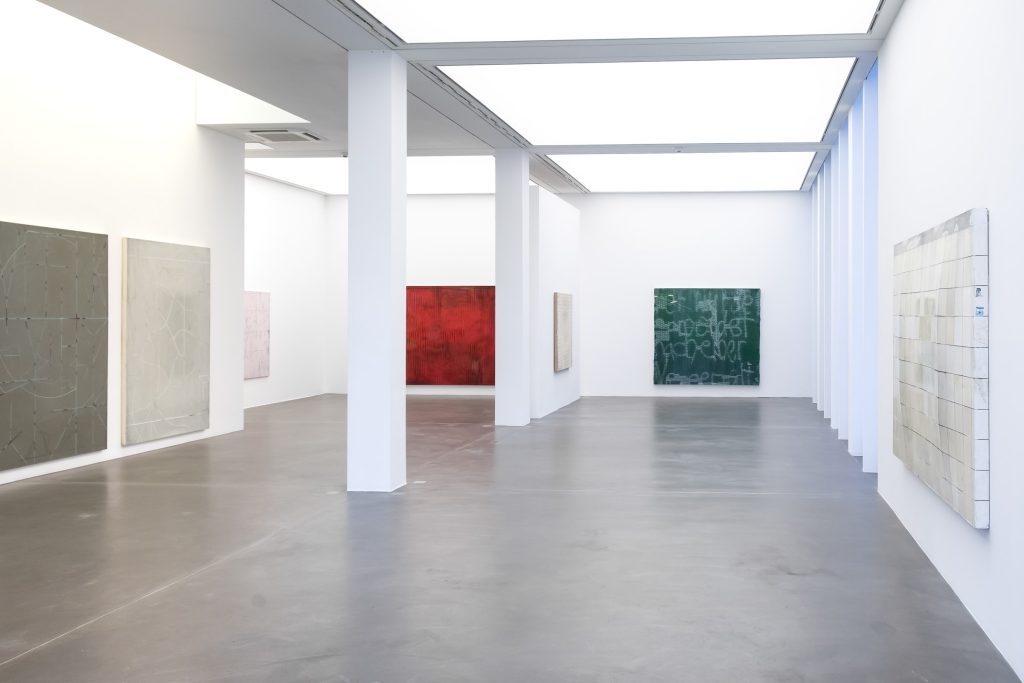
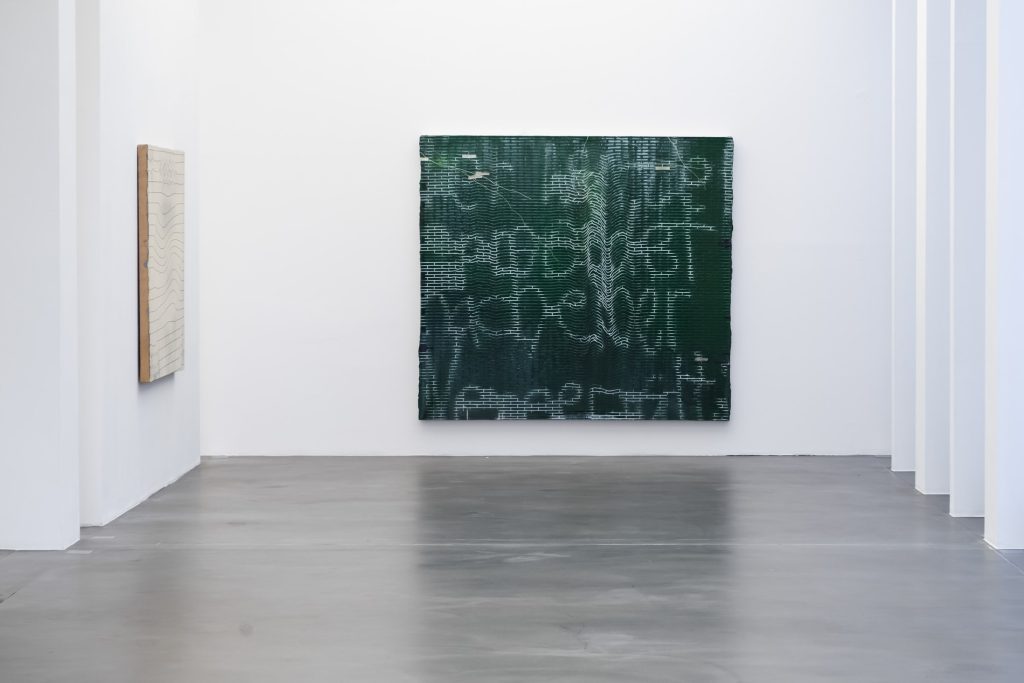
Daniel Weissbach, Stelle #35, 2014 – 2019,
acrylic and lacquer on canvas, 188 x 210 cm, Ruttkowski;68 Düsseldorf ©bart van kersavond
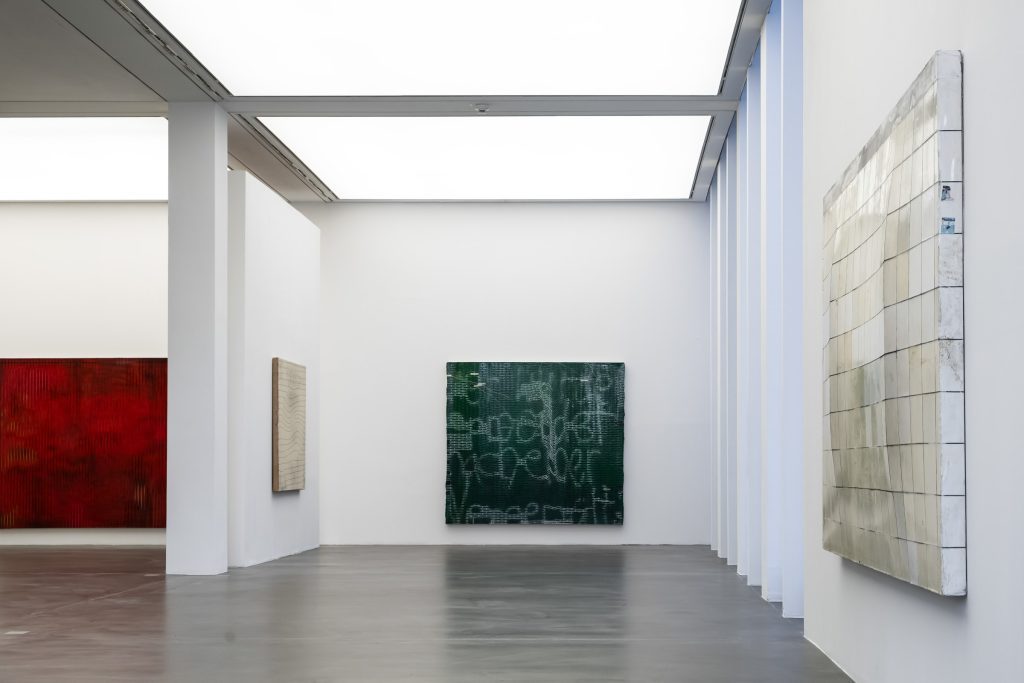
The book is available at:
hitzerot.com
ruttkowski68.com
About the publication
Hardcover, 528 pages, 22 x 30.8 cm, German/English, January 2024
ISBN: 9783911028004, Price: 60,00 €
Editors: Dirk Gössler, Steffen Köhler, Matthias Hübner
Publisher: Ruttkowski;68
Distribution: Hitzerot, Ruttkowski;68
Texts: Jöran A. Belling-Lindberg, Vincent Grunwald, Iris Hempelmann, Olga Hohmann, Gregor Jansen, Robert Kaltenhäuser, Thomas Max Waldmann
Design: Büro Bum Bum
131 views
Categories
Tags:
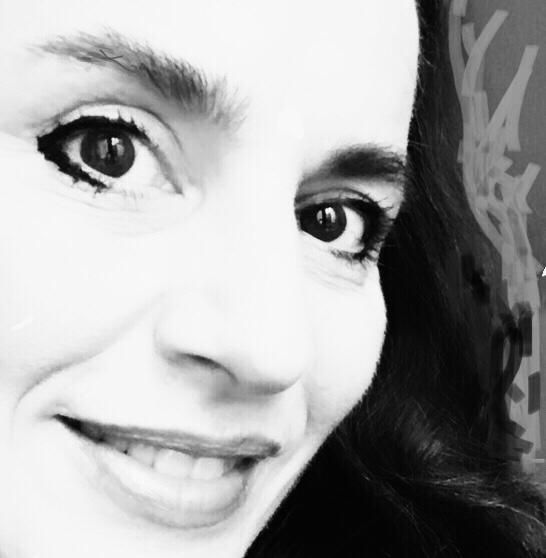


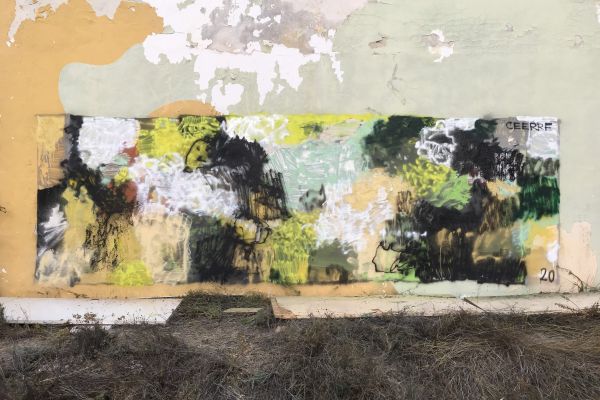
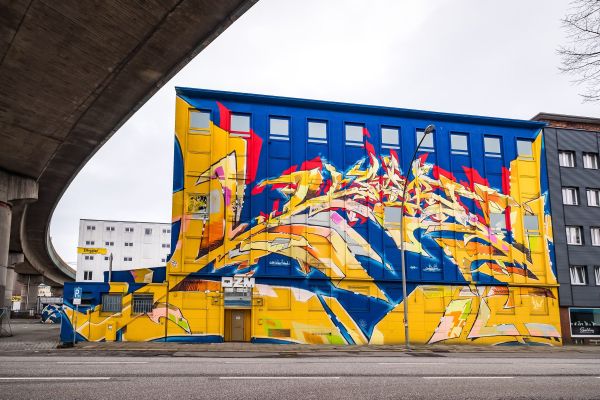
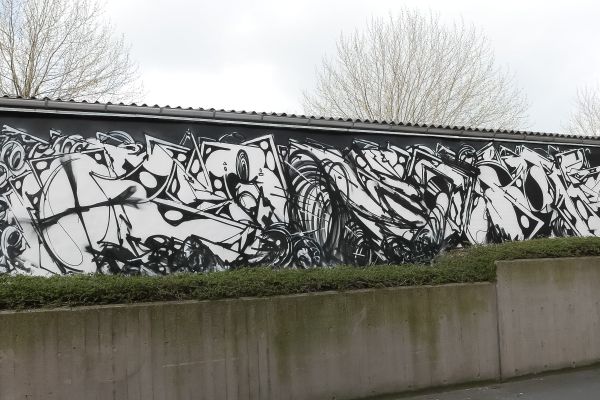
Leave a Reply